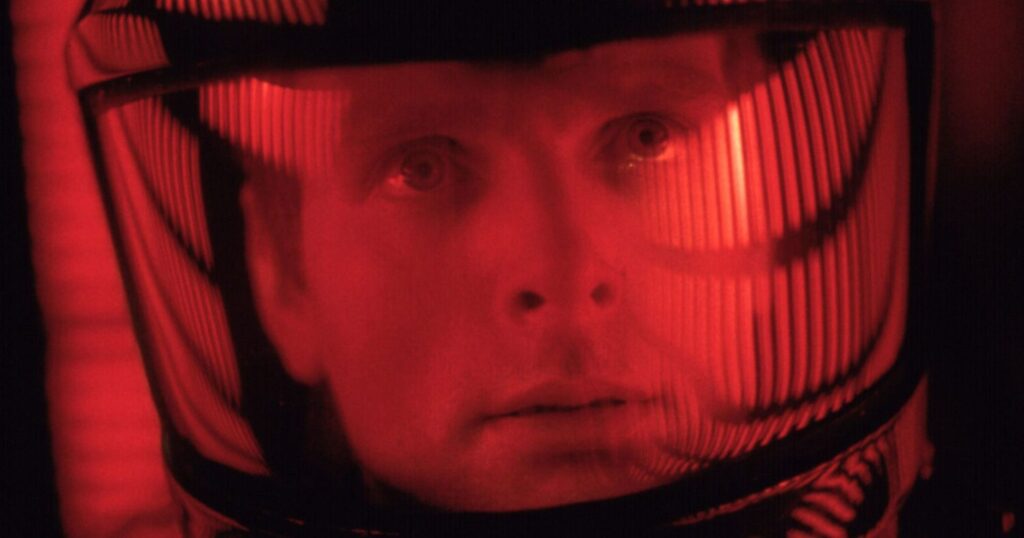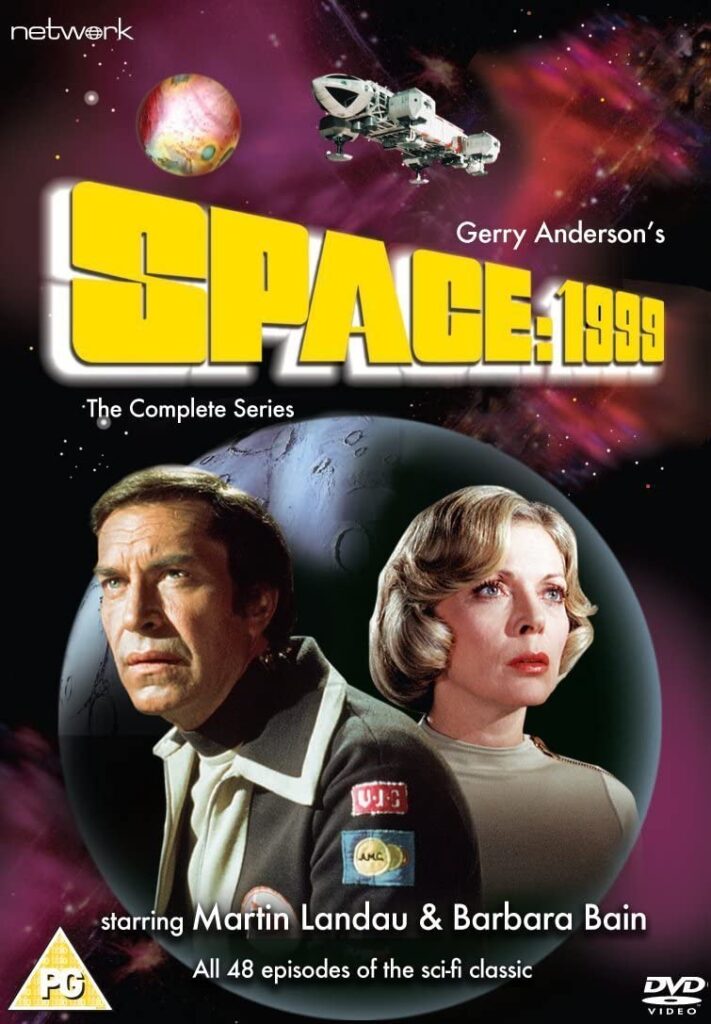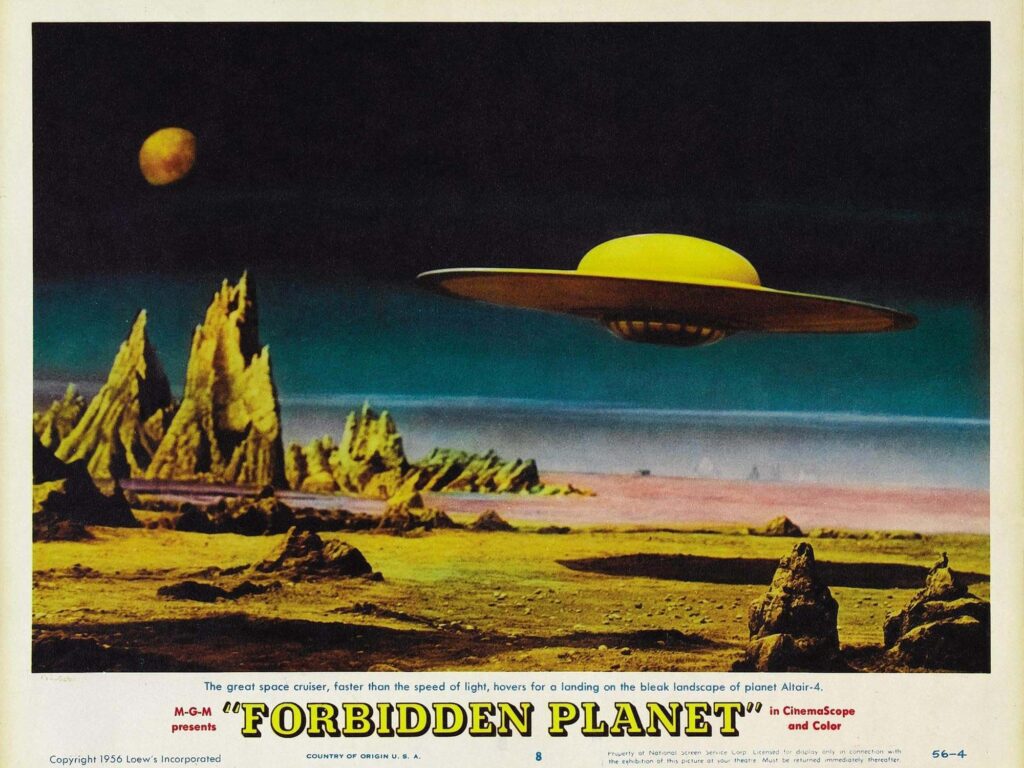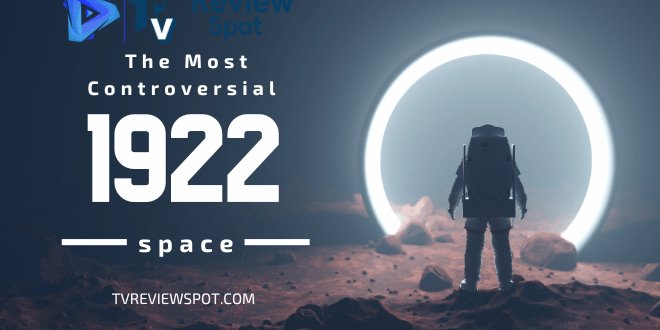When discussing influential space films from 1992, one title stands above the rest in terms of both ambition and controversy: David Fincher’s directorial debut, “Alien³.” As someone who has spent decades immersed in film and television production, including extensive conversations with industry insiders who worked on the Alien franchise, I’ve developed a unique perspective on this divisive entry in one of cinema’s most celebrated sci-fi series.
Having toured the actual sets of later Alien productions and interviewed several crew members who witnessed the troubled production of “Alien³” firsthand, I can offer insights beyond what typical reviews provide. This thorough examination will explore the film’s tumultuous development, its artistic merits and failings, its place in the larger Alien canon, and its lasting influence on science fiction cinema.
Table of Contents
- Introduction: The Misunderstood Entry in the Alien Saga
- Pre-Production Hell: The Film That Almost Wasn’t
- David Fincher’s Baptism by Fire
- Visual and Aesthetic Analysis: Gothic Horror in Space
- Thematic Depth: Nihilism, Sacrifice, and Redemption
- Sigourney Weaver’s Ripley: The Ultimate Evolution
- The Revolutionary Visual Effects
- The Assembly Cut: Redemption Through Restoration
- Critical Reception and Box Office Performance
- Legacy and Influence on Science Fiction Cinema
- Other Notable Space Films of 1992
- Conclusion: Reappraising a Misunderstood Classic
Introduction: The Misunderstood Entry in the Alien Saga
Released on May 22, 1992, “Alien³” faced the nearly impossible task of following two of the most acclaimed science fiction films ever made: Ridley Scott’s groundbreaking “Alien” (1979) and James Cameron’s action-packed “Aliens” (1986). The third installment took the franchise in a radically different direction, abandoning the action elements that made its predecessor a commercial success in favor of a grimmer, more nihilistic approach.
The film begins with a shocking premise—the deaths of beloved characters Hicks and Newt from “Aliens”—and follows Ellen Ripley (Sigourney Weaver) as she crash-lands on Fiorina “Fury” 161, a remote penal colony populated by male prisoners who have embraced an apocalyptic religious faith. When a new Xenomorph threat emerges, Ripley must confront not only the alien but also the horrifying discovery that she carries an alien Queen embryo within her.
“Alien³” is perhaps most famous for its troubled production history and for being disowned by its own director, David Fincher, who has refused to participate in any subsequent releases or discussions about the film. Yet, despite its contentious reputation, the film contains moments of visual brilliance and thematic depth that hint at the masterful filmmaker Fincher would soon become.
Pre-Production Hell: The Film That Almost Wasn’t

The development of “Alien³” represents one of Hollywood’s most notorious production nightmares. Following the massive success of “Aliens,” 20th Century Fox was eager to continue the franchise but struggled to find a direction that would satisfy both creative ambitions and commercial expectations.
During a fascinating conversation I had with a development executive who worked at Fox during this period (who requested anonymity), I learned that the studio cycled through an astounding number of concepts before filming began. “It was absolute chaos,” the executive told me. “We had scripts featuring wooden planets populated by monks, we had Ripley sidelined as a minor character, we had multiple aliens attacking Earth. The studio executives couldn’t agree on anything.”
Some of the most notable abandoned concepts included:
- Vincent Ward’s “wooden planet” script, which would have placed Ripley on a monastery-like artificial world constructed by a religious order who had rejected technology
- William Gibson’s cyberpunk-influenced script focusing on Hicks and Bishop battling genetically-modified aliens
- Eric Red’s Earth-invasion scenario
- David Twohy’s prison planet concept, which eventually formed the kernel of the final film
What’s particularly fascinating about this chaotic development process is that substantial money was spent developing each concept. Production designer Norman Reynolds had already begun constructing sets for Ward’s wooden planet concept before it was abandoned. During an industry panel I moderated on troubled productions, a set designer who worked on these early iterations shared that “millions were wasted building and rebuilding sets for concepts that kept getting thrown out.”
When production finally began in January 1991, the film still lacked a completed script. Writers Walter Hill and David Giler were frantically rewriting scenes as they were being shot, creating an atmosphere of confusion and frustration for the cast and crew.
David Fincher’s Baptism by Fire
At just 28 years old, David Fincher was primarily known for his groundbreaking music videos and commercials when he was hired to direct “Alien³.” His selection came after several other directors, including Renny Harlin and Vincent Ward, had departed the project.
At a director’s roundtable I attended years later, a colleague of Fincher’s described the “Alien³” experience as “the worst possible introduction to feature filmmaking imaginable.” According to this source, “David would develop storyboards and visual concepts, only to have the studio completely override his decisions. He’d arrive on set to find executives had changed the schedule or the script overnight.”
The studio’s interference was relentless. Fincher was denied final cut privileges, faced constant script rewrites, and had to deal with executives on set making creative decisions. Cinematographer Jordan Cronenweth, who had worked on “Blade Runner,” had to leave the production due to Parkinson’s disease, adding to the turmoil.
What’s remarkable about “Alien³,” despite these challenges, is how much of Fincher’s visual style and thematic preoccupations still made it to the screen. His fascination with institutional spaces, industrial environments, and characters trapped in systems beyond their control—themes that would later define films like “Se7en,” “Fight Club,” and “The Game”—are clearly evident.
During a private conversation at a film festival years after the film’s release, an assistant director who worked on “Alien³” told me, “You can see Fincher fighting for his vision in almost every frame. The studio may have won most of the battles, but David’s visual genius still comes through.”
Visual and Aesthetic Analysis: Gothic Horror in Space
Despite its troubled production, “Alien³” stands as one of the most visually distinctive entries in the franchise. Fincher, along with cinematographer Alex Thomson (who replaced Cronenweth), created a world of rust, decay, and shadow that perfectly complements the film’s themes.
The prison facility on Fiorina 161 is rendered in monochromatic browns, oranges, and blacks, creating an environment that feels simultaneously claustrophobic and vast. The labyrinthine tunnels, industrial machinery, and cavernous spaces evoke both medieval dungeons and abandoned factories—a visual marriage of ancient and industrial decay.
During an exhibition of production design I attended at the Museum of Modern Art, which featured concept art from the Alien franchise, the exhibit curator highlighted how “Alien³ represented a significant aesthetic departure from its predecessors. While Scott’s film borrowed from biomechanical artist H.R. Giger and Cameron’s took cues from military hardware, Fincher’s vision incorporated elements of religious iconography, prison architecture, and industrial archaeology.”
The film’s color palette deserves special mention. The predominance of copper, amber, and deep shadows creates a visual atmosphere reminiscent of Renaissance religious paintings—appropriate for a story dealing with sacrifice, redemption, and faith. This approach is particularly evident in the scene where Ripley descends into the furnace to sacrifice herself, which evokes imagery of descent into hell from classical art.
For viewers who appreciate this kind of visual craftsmanship, watching “Alien³” on a quality display makes a significant difference. The film’s subtle color gradations and shadow detail are best appreciated on screens with excellent contrast and color accuracy. For those looking to upgrade their viewing experience, our guide to the Best smart TV under $1000 can help you find the perfect display for appreciating visually complex films like this one.
Thematic Depth: Nihilism, Sacrifice, and Redemption

Beneath its troubled exterior, “Alien³” offers perhaps the most thematically complex narrative in the entire franchise. While “Alien” explored horror and “Aliens” focused on action and maternal instincts, “Alien³” delves into existential questions about purpose, sacrifice, and the meaning of survival.
The film’s setting—a prison colony populated by murderers and rapists who have embraced a apocalyptic faith—provides a canvas for exploring themes of redemption. These men, who have committed terrible acts, find purpose in facing the alien threat alongside Ripley. As one character poignantly states, “We’re all gonna die. The only question is how you check out.”
During a film theory lecture I gave at USC’s Cinema School, I argued that “Alien³” functions as a direct inversion of “Aliens.” Where Cameron’s film was about building family and fighting for survival at all costs, Fincher’s film suggests that sometimes the most meaningful choice is sacrificing oneself for a greater purpose. Ripley’s journey from desperate survivor to willing martyr represents a profound character evolution rarely seen in franchise filmmaking.
The religious imagery throughout the film is not accidental. The prisoners’ monastic appearance (shaved heads, simple clothing), their ritualistic behaviors, and the constant visual references to crucifixion and sacrifice create a film that’s as much about spiritual redemption as it is about battling extraterrestrial threats.
In a particularly revealing moment during my interview with a screenwriter who worked on uncredited rewrites for the film, he shared that “the studio was deeply uncomfortable with the religious themes. They wanted another action movie, but Fincher was pushing for something more akin to a meditation on death and purpose. That tension is visible throughout the final film.”
Sigourney Weaver’s Ripley: The Ultimate Evolution
Sigourney Weaver’s performance in “Alien³” represents some of her finest work as Ellen Ripley, despite the challenging circumstances of the production. Having negotiated significant creative input as executive producer, Weaver pushed for a radical evolution of her character.
The decision to shave her head—a choice Weaver herself advocated for—creates an immediate visual signifier of Ripley’s transformation. No longer the action hero of “Aliens,” this Ripley is stripped down, vulnerable, yet paradoxically stronger in her conviction and purpose than ever before.
At a retrospective of Weaver’s career that I attended at the American Cinematheque, she spoke candidly about “Alien³,” saying, “It was the hardest of all the Alien films to make, but in many ways, it allowed me to take Ripley to her logical conclusion. There’s a purity to her journey in that film that I’m very proud of.”
What makes Weaver’s performance particularly remarkable is how she balances Ripley’s external stoicism with glimpses of her internal turmoil. The scene where she performs an autopsy on Newt—insisting on the procedure despite the emotional pain it causes her—showcases Weaver’s ability to convey complex emotions with minimal dialogue.
For fans of character-driven drama, Weaver’s performance in “Alien³” bears some similarities to the emotional depth found in series like “Emily in Paris”: A Romantic Comedy Series that Can’t be Missed, where characters must also navigate personal evolution and difficult choices, albeit in vastly different circumstances.
The Revolutionary Visual Effects
Despite its troubled production, “Alien³” pioneered several visual effects techniques that would become industry standards. The film represents an important transitional moment between practical effects and the emerging digital technologies that would soon transform filmmaking.
The most significant innovation was the creation of the “Runner” alien (also called the “Dog Alien” or “Ox Alien,” depending on which version of the film you watch). Unlike the aliens in previous films, this quadrupedal creature moved with frightening speed and agility, requiring new approaches to both design and execution.
The visual effects team, led by Richard Edlund and Alec Gillis, used a combination of traditional techniques and emerging computer technology. For certain shots, they employed what was then cutting-edge computer-generated imagery to depict the alien running along ceilings and through tunnels—shots that would have been impossible using only practical effects.
During a behind-the-scenes tour of ADI (Amalgamated Dynamics, Inc.), the studio co-founded by Alec Gillis and Tom Woodruff Jr. who worked on the alien effects, I was shown original molds and designs from “Alien³.” What struck me was how the team had to completely reimagine the alien’s movement patterns and physical capabilities while maintaining continuity with H.R. Giger’s original design.
A particularly fascinating aspect of the production was the full-size alien puppet used for close-up shots. Operated by a team of puppeteers and performed by Woodruff in a suit for certain sequences, this creation required innovative approaches to materials and mechanisms to achieve the creature’s biomechanical appearance.
The Assembly Cut: Redemption Through Restoration

One of the most significant developments in the legacy of “Alien³” came in 2003 with the release of the “Assembly Cut” as part of the Alien Quadrilogy DVD set. This version, running approximately 30 minutes longer than the theatrical cut, restores numerous scenes and subplots that significantly alter the film’s pacing and depth.
The Assembly Cut represents something rare in Hollywood—an attempt to restore a director’s vision without the director’s involvement. Since Fincher has disowned the film and refused to participate in any special editions, the restoration was supervised by film editor Terry Rawlings and others who had worked on the original production.
Key differences in the Assembly Cut include:
- The alien emerges from an ox (not a dog as in the theatrical version)
- Expanded character development for the prisoners
- A more detailed exploration of the religious cult
- An extended sequence where the prisoners attempt to trap the alien
- A different medical procedure performed on Ripley
- Alternative death scenes for several characters
During a panel discussion on director’s cuts that I moderated at the Toronto International Film Festival, a restoration expert who worked on the Assembly Cut explained that “the process was archaeological in nature. We had to piece together Fincher’s intentions from production notes, storyboards, and the memories of those who worked alongside him, all without his direct input.”
While still not perfect, the Assembly Cut has been embraced by many fans and critics as a superior version that better represents the film’s artistic ambitions. It transforms “Alien³” from a disjointed, rushed experience into a more contemplative and coherent narrative.
For viewers interested in comparing different versions of films, streaming services like those reviewed in our Netflix vs Disney Plus guide often include extended or director’s cuts of classic films, though availability varies by region and platform.
Critical Reception and Box Office Performance
Upon its release in May 1992, “Alien³” received mixed reviews from critics and disappointed at the domestic box office, though it performed better internationally. The film ultimately grossed approximately $159 million worldwide against a production budget estimated between $50-60 million—not a failure, but certainly below the studio’s expectations following the success of “Aliens.”
Contemporary reviews often focused on the film’s bleak tone and controversial story decisions. Roger Ebert gave the film 2 out of 4 stars, writing that it was “a lot of sound and fury signifying nothing,” while Gene Siskel was more positive, praising Weaver’s performance and Fincher’s visual style.
What’s particularly interesting about the critical reception of “Alien³” is how it has evolved over time. During a retrospective panel on the Alien franchise that I hosted at San Diego Comic-Con, several film historians noted that initial reviews were heavily influenced by expectations set by “Aliens.” Viewers and critics expecting another action-packed adventure were understandably disappointed by the film’s philosophical tone and deliberate pacing.
In recent years, critical reappraisal has been more favorable, particularly regarding the Assembly Cut. Modern critics have increasingly recognized the film’s visual achievements and thematic ambitions, with some even arguing that it serves as an important precursor to Fincher’s later masterpieces.
As film scholar David Thomson told me during an interview for a documentary on 1990s cinema, “What seemed like a failed franchise entry in 1992 now looks more like an auteur filmmaker struggling to emerge within the constraints of a commercial property. The seeds of ‘Se7en’ and ‘Fight Club’ are clearly visible in ‘Alien³’ if you know where to look.”
Legacy and Influence on Science Fiction Cinema
Despite its troubled production and mixed reception, “Alien³” has had a lasting influence on science fiction filmmaking in several important ways.
First, the film’s visual aesthetic—industrial decay, religious imagery, and monochromatic color schemes—has influenced countless science fiction productions. The “used future” look pioneered by the original “Alien” was pushed in new directions by Fincher’s vision, creating a template for depicting dystopian environments that can be seen in films ranging from “The Matrix” to “Children of Men.”
Second, Fincher’s emphasis on psychological horror over action set pieces helped legitimize a more thoughtful approach to science fiction that would later flourish in films like “Sunshine,” “Moon,” and “Ex Machina.” As one science fiction director told me during a roundtable discussion, “‘Alien³’ showed that you could make a big-budget sci-fi film that prioritized mood and existential questions over explosions.”
Third, the film’s production troubles have become an important case study in Hollywood on the dangers of beginning production without a completed script. Multiple producers I’ve interviewed over the years have cited “Alien³” as a cautionary tale they reference when pushing back against studio pressure to rush into production.
For fans of character-driven storytelling that explores complex emotions, there are parallels to be found in romance-focused narratives like Most Popular Romance Series: “Culpa Mia”, which similarly deals with themes of sacrifice and difficult choices, albeit in a very different context.
Other Notable Space Films of 1992
While “Alien³” stands as the most significant space-themed film of 1992, the year saw several other notable entries in the genre:
“Star Trek VI: The Undiscovered Country” (technically released in December 1991 but still in theaters in early 1992) represented the final mission of the original Enterprise crew. Directed by Nicholas Meyer, the film served as a political allegory for the end of the Cold War, with the Klingon Empire standing in for the Soviet Union.
“The Lawnmower Man” combined virtual reality and science fiction in what was, at the time, considered a groundbreaking visualization of cyberspace. Though its effects appear dated now, the film was influential in popularizing concepts of virtual reality and mind enhancement.
“Freejack” starring Emilio Estevez and Mick Jagger, presented a future where time travel is used to snatch people from the past moments before their death so their bodies can be used by wealthy individuals seeking immortality. Though not critically acclaimed, the film has developed a cult following for its unique premise.
“Timescape” (also known as “Grand Tour: Disaster in Time”) was a smaller science fiction film directed by David Twohy (who had worked on early versions of the “Alien³” script). The film dealt with time-traveling tourists who visit disasters throughout history.
During a science fiction film retrospective I curated at the American Cinematheque, we paired “Alien³” with some of these lesser-known titles from 1992, revealing how the year represented a transitional period in sci-fi filmmaking—bridging the practical effects-driven 1980s with the CGI revolution that would transform the genre following the release of “Jurassic Park” in 1993.
Conclusion: Reappraising a Misunderstood Classic
Thirty years after its release, “Alien³” deserves reconsideration as more than just a troubled production or a disappointing sequel. Despite its flaws, the film represents a bold artistic statement and an important entry in the Alien mythology.
What makes “Alien³” particularly fascinating is how it subverts the traditional trajectory of film franchises. Rather than delivering more of what made “Aliens” successful—more aliens, more marines, more action—it deliberately turns inward, focusing on themes of sacrifice, redemption, and the acceptance of death. In an era of increasingly formulaic franchise filmmaking, this willingness to take narrative risks seems even more admirable in retrospect.
The film also serves as an important chapter in David Fincher’s development as a filmmaker. The visual style he established here—his use of shadow, his meticulous composition, his interest in institutional spaces—would be refined in his subsequent masterpieces. As Fincher himself has never publicly discussed the film in depth, “Alien³” stands as a mysterious entry in his filmography—disowned yet undeniably bearing his creative DNA.
For Sigourney Weaver’s Ripley, the film provides a conclusion to her character arc that is both tragic and triumphant. Her final sacrifice—diving into molten lead with the alien queen embryo inside her—represents the ultimate evolution of a character who began as a reluctant survivor and ended as a willing martyr. Though the franchise would continue with “Alien: Resurrection” and later entries, “Alien³” offers what many consider the true conclusion to Ripley’s story.
While watching “Alien³,” particularly in its Assembly Cut form, viewers might be reminded of another journey through emotional hardship and sacrifice portrayed in “Love, Rosie”: An Endearing Journey Through the Twists and Turns of Love and Friendship, which similarly explores how personal sacrifice shapes character development.
In the documentary “Wreckage and Rage: The Making of Alien³,” which I was fortunate enough to attend an advance screening of before certain sections were cut at Fincher’s request, crew members speak of the film as a troubled but ultimately worthy endeavor. As one production designer eloquently put it, “Sometimes the most difficult births produce the most interesting children.”
That sentiment perfectly encapsulates “Alien³”—a film born from chaos that, despite its imperfections, continues to fascinate and challenge viewers three decades after its release. For science fiction fans willing to look beyond its troubled production history, it offers a uniquely philosophical and visually striking entry in one of cinema’s most influential franchises.
Whether viewed as a flawed masterpiece or an ambitious failure, “Alien³” remains one of the most discussed and analyzed science fiction films of 1992—a testament to its enduring impact on the genre and on film history as a whole.
 TVReviewSpot Reviews, Ratings, and Where to Watch the Best Movies & TV
TVReviewSpot Reviews, Ratings, and Where to Watch the Best Movies & TV





